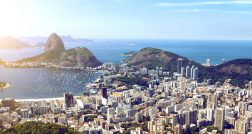Go East
U.S. travelers will be the biggest spenders in the Asia-Pacific region through 2020, and resorts in the region can make the most of the cash boom.
U.S. travelers spent $231.6 billion in 2015 in the Asia-Pacific region and by 2020 are expected to spend more than $257 billion on travel, according to the Pacific Asia Travel Association. Daniel Tan, Southeast Asia business development director at RCI, weighs in on what accounts for the influx in spending and how resorts can capitalize on this growth.
“There is an increase in air connectivity with the Asia-Pacific region that encourages travelers from the U.S.,” Tan says. “And the U.S. economy and the dollar are expected to grow in the next few years running into 2020.” With more flights and a strengthened currency, resorts in the Asia-Pacific region will need to create relevant ancillary travel products that cater to U.S. travelers and also provide memorable travel experiences that will drive returning visitors.
Tan says resorts can entice visitors to return through sustainability and connectivity. Eco-friendly improvements such as low-flow water fixtures and towel-reuse programs are attractive selling points, and U.S. travelers are looking for sustainability before booking. According to a February 2016 study by Mandala Research, of the nearly 2,300 U.S. travelers surveyed, 60 percent were concerned with sustainability when traveling abroad. And among those eco-minded travelers, 57 percent were more likely to book with brands based on their sustainable practices.
A strong online presence increases connectivity. “Social media now influences nearly one-fourth of all international trips, especially travelers’ choice of destination and accommodations,” Tan says, citing ITB Berlin’s 2015 Annual Report. A resort can align its digital strategy to the U.S. market by having a presence on popular social media platforms such as Facebook, Instagram and Twitter and through peer-reviewed sites such as TripAdvisor and Kayak.
Photo credit: iStockphoto




